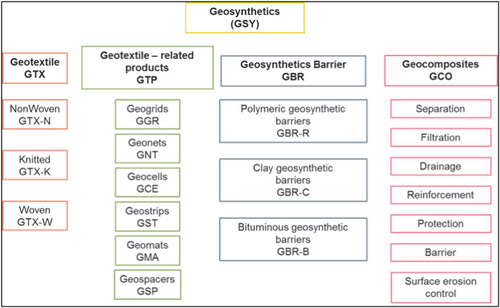 “Behold, they are one people, and they have all one language, and this is only the beginning of what they will do. And nothing that they propose to do will now be impossible for them. Come, let us go down and there confuse their language, so that they may not understand one another’s speech.” (Genesis 11:5–8)
“Behold, they are one people, and they have all one language, and this is only the beginning of what they will do. And nothing that they propose to do will now be impossible for them. Come, let us go down and there confuse their language, so that they may not understand one another’s speech.” (Genesis 11:5–8)
Nowadays there are many languages around the world, creating a barrier in communication and understanding, as it is difficult to work together and strive for a common result without talking the same language (I know it personally!) If we extend this situation to the world of geosynthetics we can understand why in Italy, a geotextile is specified differently to in Brazil or South Africa.
ISO was officially founded in 1947 and a principal objective was “to facilitate the international coordination and unification of industrial standards.” ISO stands for “International Standard Organization.”
However in different languages the acronym might change, therefore they found a worldwide meaning: “ISO,” is derived from the Greek isos, which means “equal.” Whatever the country, whatever the language, the short form of the organization’s name is always ISO1.
The aim of ISO is to facilitate one world language where, in an industry we speak the same language. For many years the ISO 9000 series (now 9001) has been promoted throughout the world as the quality management standard to follow. Every industry that is registered ISO 9001 means that a manufacturer in Mexico follows the same quality procedures as a manufacturer in Australia or South Africa.
In geosynthetics, ISO is active through Technical Committee 221 (TC 221). Since inception in 2000, TC221 has developed 32 geosynthetic standards and currently there are 4 working groups for the implementation / review of main topics such as durability and mechanical properties.
 |
In South Africa the ISO partner is the South Africa Bureau of Standards (SABS) and its Technical Committee 59J holds the responsibility of developing geosynthetics standards in liaison with organizations such as GIGSA and IGS.
Currently there are few SANS geosynthetic standards available and most of them are out of date. If you search the SABS for a definition of geosynthetics you will not find one. In contrast, of the first ISO standards developed was ISO 10318: Geosynthetics – Terms and Definitions, issued in 1990.
The scope of ISO 10318 includes: “…defines terms related to functions, products, properties and other terms, as well as symbols applying to geosynthetics. Definitions of terms not included in this standard may be found in the standards describing appropriate test methods,” and the first definition is geosynthetics!
The implementation of ISO standards will assist South African designers to work in harmony with the Eurocode 7 design codes, developed by the European Committee for Standardization (CEN). These are already harmonized in SANS 10160, with references to ISO standards.
 |
The need for standardization in geosynthetics is clear. To promote quality products, certified installations and correct testing procedures SABS TC59J has formed the following working groups:
- WG3: Geomembranes
- WG4: Clay Geosynthetic Barriers
- WG5: Geotextiles
- WG6: Geogrids
The Chair of the working groups intends to accomplish the required tasks involved in updating geosynthetic standards in South Africa within the next 6 months, as recommended by the SABS.
Once accomplished, South African geosynthetic industries not already ISO 9001-accredited will be able to produce products in line with worldwide standards, South African designers to design in accordance with the latest design philosophies based on ISO standards; and worldwide clients to trust South African geosynthetics.
Edoardo Zannoni is the Chair of the Geosynthetics Interest Group of South Africa (GIGSA) Specifications Subcommittee. He can be reached at edoardo.zannoni@maccaferri.co.za. GIGSA is a chapter of the International Geosynthetics Society (IGS).
References
(1) www.iso.org
(2) ISO 10318:2005 Geosynthetics – Terms and definitions.
(3) SANS 10160: Basis of structural design and actions for buildings and industrial structures
NOTE: This article first appeared in the February 2012 GIGSA Newsletter (www.gigsa.org). It appears here by permission of the Newsletter’s editor, Peter Davies. We thank him and his chapter colleagues for sharing their expertise with the international engineering community.











